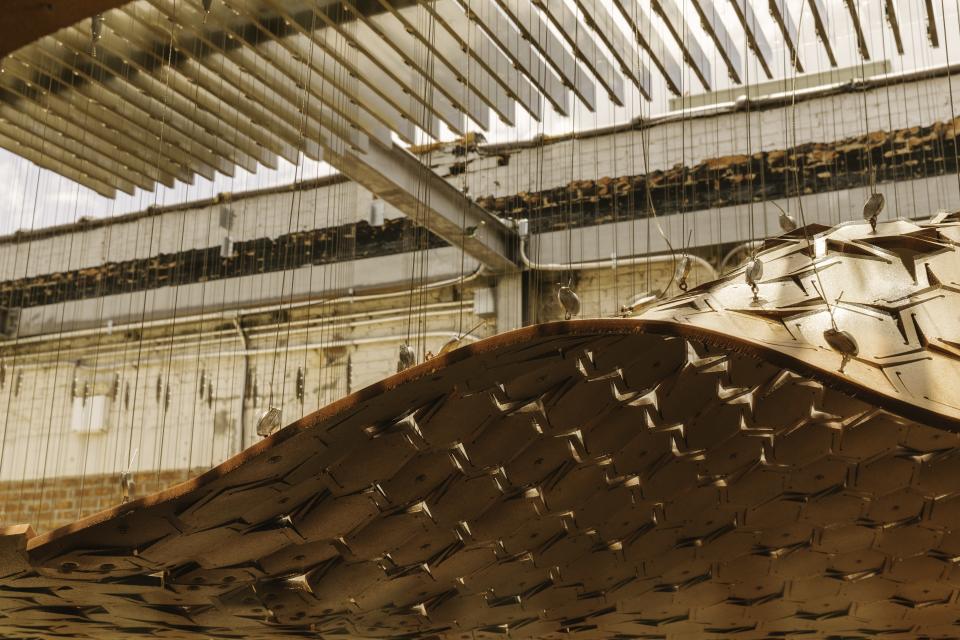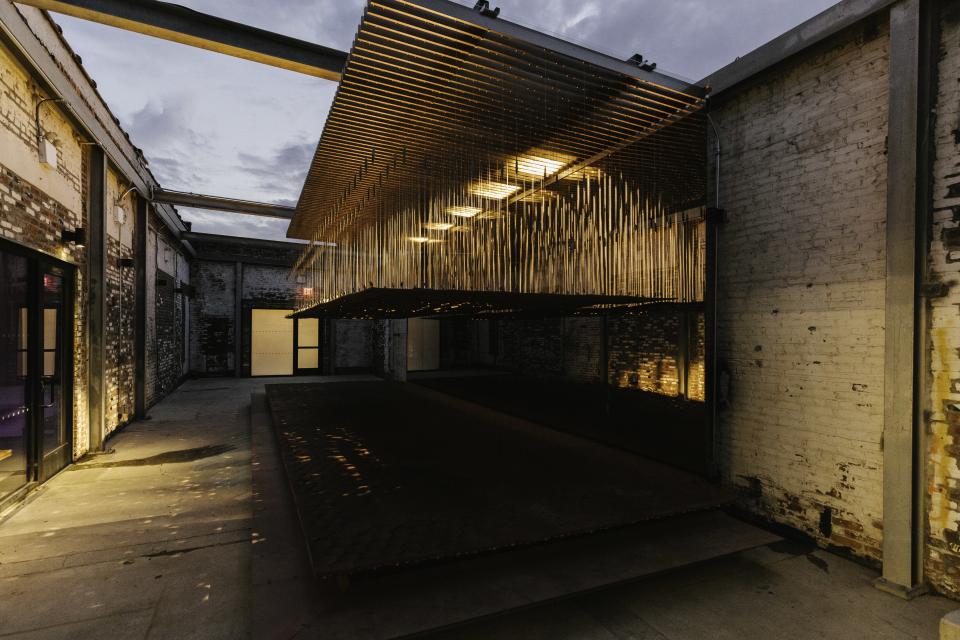Nassia Inglessis Installs a Kinetic, Experiential Installation at A/D/O
Rush hour in New York is like a perfectly choreographed performance. Earbuds in, smartphones out, commuters move en masse through their city of concrete, glass, and steel, barely raising an eye to the people or structures around them. Those who get out of step to stop, look up, and notice their surroundings might just be bulldozed by another city dweller late for work.
For "Urban Imprint"—a kinetic installation at the Greenpoint, Brooklyn, creative space A/D/O by MINI—Athens- and London-based Nassia Inglessis has tried to counteract this instinct with a flexible kind of urban environment that demands engagement. "We often feel like we have to navigate our city within these preset boundaries—a design that has been placed onto us," Inglessis says. "It can feel like this vessel of glass and concrete that we’ve been poured into—something we have to adapt to, rather than it to us."
Her installation—and first project Stateside—does the opposite. In the courtyard of A/D/O, visitors can enter a sort of architectural exoskeleton that responds to their movements. When they step on the brick-colored skin made from concrete and rubber, it gives way slightly underfoot. The motion from the floor is then translated to the ceiling, which moves up and down on 400 metal cables, contouring the movements of the people inside.

To develop the idea, Inglessis contemplated the way we feel outside of cities—what feels different about a more natural existence? In nature, we leave an imprint. "You’re walking through the woods and you leave your footprint in the leaves or in the mud," she explains. "There’s evidence of your presence. You have a stronger sense of your embodied self." It's an idea that has roots in "Disobedience," the kinetic installation she created for the 2018 London Design Biennale and installed in the courtyard of Somerset House. The 56-foot-long structure, a mesh of recycled plastic panels, flexed and morphed around visitors as they moved through the space.
Visitors are already happily engaging with "Urban Imprint"—rolling around on its malleable surface, splaying their arms to see how the environment responds. On the day we talked, a choreographer had come to visit—Inglessis is planning to organize several dance performances in the installation, which she calls "a dancer's delight," over the summer. Not unlike with a city, it's people that bring the installation to life. "I call it a living sculpture because it takes life from the people that interact with it," she explains. "The human is part of its design. Without the human, the design would not exist."

Originally Appeared on Architectural Digest

